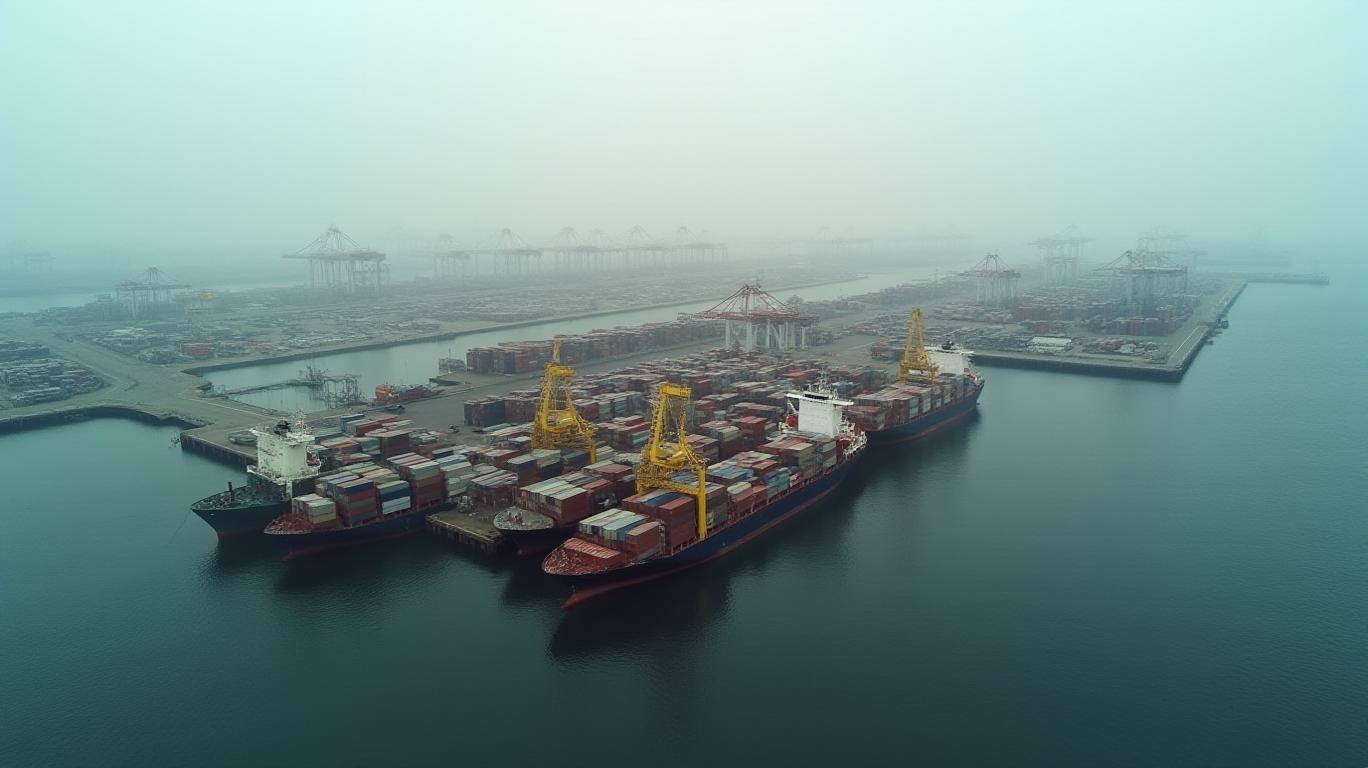Porting Through the Storm: Navigating Southern California's Tariff-Driven Shift to Resilient Sectors
The ports of Los Angeles and Long Beach, the lifeblood of Southern California's economy, are reeling from the aftershocks of Trump's 2025 tariffs. With cargo volumes plummeting by 35% compared to 2024 levels and 17 Asia-bound ships canceling arrivals this month, the region faces a reckoning. Yet amid the turmoil, a new economic order is emerging—one rooted in reshored manufacturing, clean tech, and supply chain resilience. For investors, this is a moment of opportunity: the pain of port-dependent industries is giving way to a structural shift toward sectors primed to thrive in the post-tariff era.
The Vulnerabilities: Port-Driven Economies in Freefall
The tariffs' immediate impact is stark. Over 1.5 million jobs tied to Southern California's ports—dockworkers, truckers, warehouse staff—are now at risk. Longshore worker Charlie Camacho describes a landscape where “dispatch offices empty by noon,” while glove salesman Frank Groves reports a 75% sales drop. The crisis extends beyond labor: China's share of the Port of Los Angeles' business has shrunk from 60% to 45%, as manufacturers flee U.S. levies by shifting production to Southeast Asia.
But the ripple effects are even deeper. Agriculture, Southern California's export backbone, is in freefall: almond farmers like Jenny Holtermann face $1.10-per-pound price cuts due to retaliatory tariffs, while California's $3.2 billion dairy sector grapples with lost Chinese and Mexican markets. Even the wine industry—a symbol of California's prestige—is reeling, with China's 125% retaliatory duties gutting exports and forcing vineyards to stockpile unsold bottles.

The Opportunity: Betting on Resilient Sectors
The pain of protectionism has accelerated a broader trend: the reshoring of critical industries. Federal policies like the CHIPS and Science Act and the Inflation Reduction Act are fueling a manufacturing renaissance in sectors that can't afford fragility.
1. Semiconductors: The New Silicon Frontier
The $200 billion in private investments pledged to U.S. semiconductor manufacturing by 2025 is a masterstroke. In Southern California, Siemens' $95 million expansion in Pomona—creating 123 jobs and targeting carbon-neutral production of EV components—epitomizes this shift. The region's tech hubs, such as Silicon Beach, are poised to dominate advanced packaging and AI-driven chip design.
2. Electric Vehicles (EVs): The Tariff-Proof Supply Chain
While Tesla's sales slumped 21.5% in Q1 2025, non-Tesla EV registrations surged 14%, signaling a maturing market. Southern California's EV ecosystem—from battery manufacturers to charging infrastructure—benefits from $369 billion in federal clean energy incentives. Look no further than the region's 147 available EV models (up from 105 in 2024) and 178,000 public charging ports as proof of scale.
3. Clean Tech: The Geopolitical Hedge
The $52.7 billion CHIPS Act and California's Zero-Emission Vehicle Infrastructure Plan are creating a green industrial complex. Companies like Wieland North America (modernizing copper component production for EVs) and TS Conductor (building HVDC transmission lines) are securing $500 million+ projects that insulate supply chains from tariff volatility.
Risks and Rewards: Navigating the Transition
The path is not without pitfalls. Geopolitical tensions—such as China's dominance in rare earth minerals—threaten semiconductor and EV supply chains. Meanwhile, the 88% of industry professionals warning of economic volatility require caution.
Yet the upside is undeniable. Reshored manufacturing creates 40,000 high-quality jobs annually, while EV adoption in California—already at 23% of new vehicle sales—will only accelerate. Investors ignoring this transition risk being left behind.
Act Now: The Tariff-Resistant Portfolio
For investors, the playbook is clear:
- Allocate to semiconductor leaders like ASML and Applied Materials (AMAT), which are capitalizing on the CHIPS Act's subsidies.
- Diversify into EV supply chains, including battery tech (e.g., CATL's North American partners) and charging infrastructure.
- Leverage clean tech ETFs like the Invesco Solar ETF (TAN) or iShares Global Clean Energy ETF (ICLN) to hedge against fossil fuel instability.
The ports' decline is not an end—it's a catalyst. Southern California's future lies not in cargo ships but in the silicon, lithium, and policy-driven innovation that can't be taxed away.

The tariffs have exposed fragility. Now is the time to invest in what lasts.

Comments
No comments yet